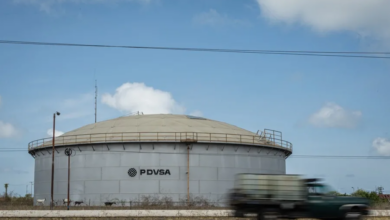How does the Central Bank’s interest rate work?
What’s behind the latest monetary decision?

Leer en Español: ¿Cómo funcionan las tasas de interés del Banco Central?
“El Banco de la República” is Colombia’s Central Bank. Under constitutional law, the entity has the mission to preserve the Colombian Peso’s acquisitive power while maintaining its solid long-term values for products and employment. The bank administrates international reserves, emits the nation’s currency, and serves as lender and banker for private credit establishments. Finally, the bank is the fiscal agent of the government.
All Central Banks are connected to the United States’ Federal Reserve. Only the Federal Reserve can print dollars, which is the currency of reference worldwide. The Fed sells dollars to every country with an interest rate, then a Central Bank sells the money to Private Banks at another rate, and Private Banks lend money to citizens at a different rate.
This system permits the existence of an efficient quantity of money supply worldwide.
Money Supply
The money supply is the amount of currency there is in an economy. Every time an entrepreneur closes a deal then someone will purchase said product, thus creating value for the society as a whole. If productivity rises then transactions will be made and money will become scarce. Central Banks exist to give a solution to this situation through two different ways.
The first way is inflation, which occurs when Central Banks prints money. Every given period, the Central Bank’s officials revise the technical team’s analysis to determine how much will the economy expand in an established period. In order for the economy not to run short of money, the bank will print coinage in advance.
A fair amount of inflation will keep the economy healthy as there will be enough money for the increasing production inside a nation; an overrated level of inflation will generate more money than products so more money is needed to pay for an item.
Venezuela- while deflation means items will become cheaper overtime, which is a tragedy as incentives for production decrease and the economy stalls
Colombia’s inflation rate rose to 3.97% as the production of food suffered an unexpected negative shock.
Naturally, a good inflationary policy will set the conditions for businesses to thrive. Competition among emerging businesses is solved through innovation and development, all which require capital. The free market allows entrepreneurs to fulfill their enterprises through credit, which is obtained through banks. Otherwise, only affluent individuals would be able to start a venture.
The second approach a Central Bank maintains healthy levels of money is by regulating the cost of credit. Banks, such as the Italian Banca Monte dei Paschi di Siena, have been borrowing money since 1472 and have observed that once economic conditions are favorable a surge in the demand for credit is observed, which often decreases once payment times arrive.
Said phenomenon is called the “short term debt cycle”. When an economy is slowing, meaning that little wealth is being created, Central Banks lower their interest rates so more people will access credit through Private Banks in what is called a recessive cycle. Once the economy becomes dynamic, Central Banks will rise their interest rates so less credit is provided to avoid defaults on the debt in what is called a “recuperation cycle”.
Colombia’s interest rate has been decreasing since September 2016 from 7.75% to 5%. This reduction means that the Latin American economy is in a recessive cycle, where more credit and enterprises are needed to get the economy back on track after the 2015 oil crisis and the 2017 tax reform
Just as Private Banks fix their interest rates for entrepreneurs based on the Central Bank’s decision on the short-term debt cycle, the Fed borrows money from every Central Bank according to what is called as the “long term debt cycle”, which does depend on the current state of global finances.
Central Banks safeguard our economy in the short, middle, and long term.
David Eduardo Rodríguez Acevedo | Latin American Post
Copy edited by Susana Cicchetto





